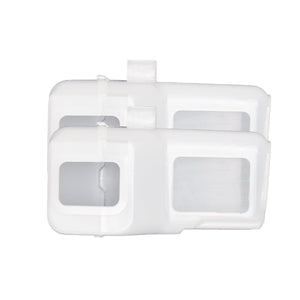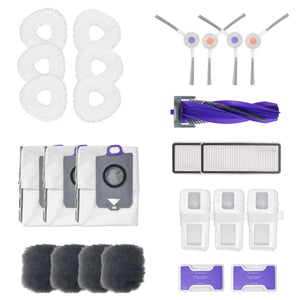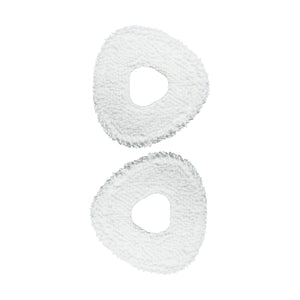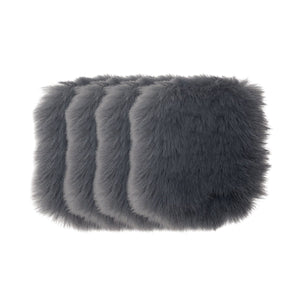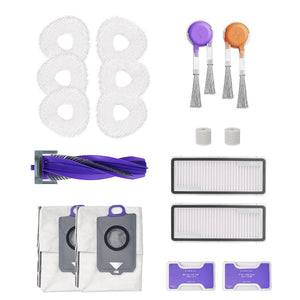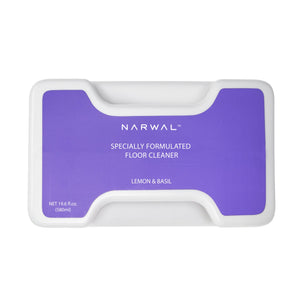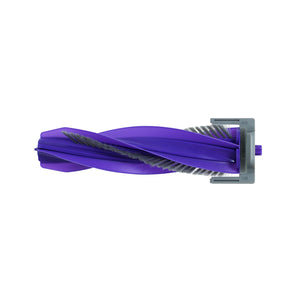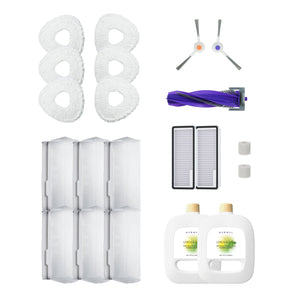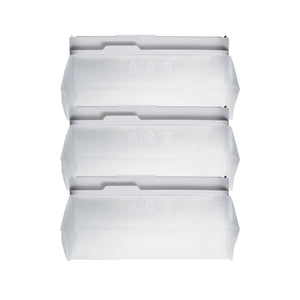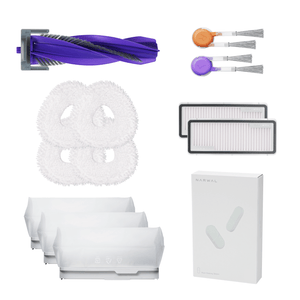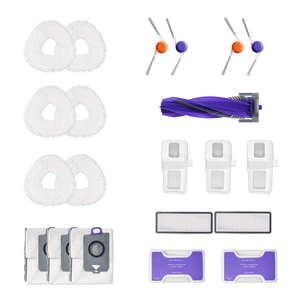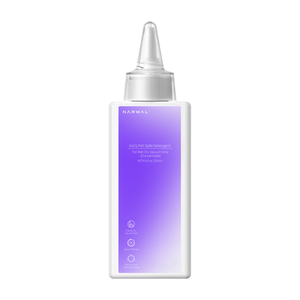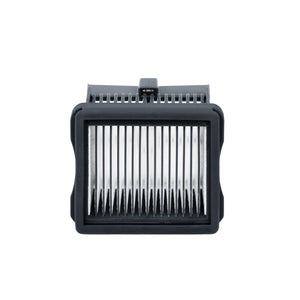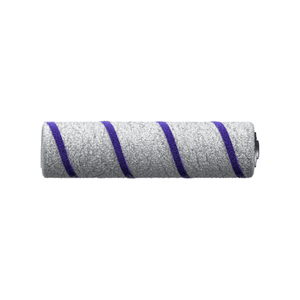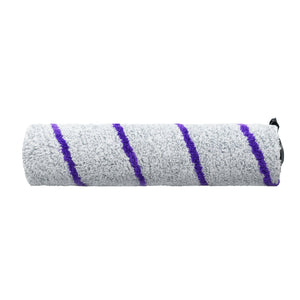Tired of dust lines your robot vacuum always misses along the walls? Most models glide smoothly across floors but still fail to clean tight corners and baseboards. Tests show that over 80% of missed debris collects within 5 mm of the wall — not from weak suction, but from design limits.
This guide breaks down how robot vacuums clean corners and edges using side brushes, edge modes, sensors, and shape design. You’ll learn why corners are hard, how AI and LiDAR improve precision, and which technologies—like Narwal Flow or Roomba’s mapping system—get closest to spotless results.
The Science Behind How Robot Vacuums Clean Corners
Robot vacuums use a combination of airflow design, centrifugal brushes, and navigation intelligence to manage edge cleaning. Their side brushes spin outward to sweep debris toward the suction inlet, which is typically centered beneath the robot. This central placement ensures balanced airflow and even suction coverage, helping the vacuum collect dust efficiently across open floors.
However, physics introduces limits. Because the suction path is centered and the robot’s body is round, there’s always a small zone—especially in sharp corners—where airflow can’t reach. Even when side brushes extend a few millimeters past the housing, fine debris in the very corner often remains outside the suction stream.
In short: airflow and brush mechanics explain why robot vacuums excel along walls but still struggle in tight, 90-degree corners.
Before diving into the design challenges, let’s look at why corners are so difficult for robots to clean perfectly.
Why Corners Are a Challenge for Robot Vacuums
Corners may look simple, but for a robot vacuum, they’re a geometric and engineering puzzle. Most robots use a round body because it turns easily and glides smoothly around obstacles. This circular form helps with navigation—but it also means that square room corners don’t match the robot’s shape. The result: a small triangular area where the robot’s brushes and suction can’t physically reach.
Another factor is suction placement. The main inlet sits at the center for stability and airflow efficiency. Even when side brushes push debris inward, some dust remains just outside the suction path, trapped where walls meet. This isn’t a design flaw—it’s a trade-off between coverage and precision.
Modern models now compensate using longer brushes, angled bristles, and wall-tracking sensors. These features allow the robot to stay closer to baseboards and pull debris from edges. Yet even with AI mapping and LiDAR navigation, true corner cleaning remains limited by geometry rather than technology.
How Side Brushes and Edge Modes Work for Edge Cleaning?
Among the most essential robot vacuum features for edge cleaning are side brushes and dedicated edge-cleaning modes.
Side brushes are among the most important tools in a robot vacuum’s design. They spin outward from the body to reach dust near walls and push it into the suction path, covering areas the central inlet can’t reach.
The effectiveness of these brushes depends on several engineering factors:
-
Length and Flexibility: Longer, softer bristles sweep further into corners and glide along baseboards without scratching.
-
Rotation Speed: If the brush spins too fast, it can scatter dirt; if too slow, it may miss debris.
-
Angle and Position: Optimized placement ensures the brush touches the floor edge without losing airflow efficiency.
Most robot vacuums use a single side brush, positioned to clean along the right side as they move forward. Some models add a second brush for symmetrical sweeping, improving coverage in larger rooms or around irregular furniture layouts.
Edge Mode: Focused Wall-Line Cleaning
Edge mode is a dedicated behavior that improves how the robot follows walls and baseboards. When activated, the vacuum slows down, increases suction power, and hugs the wall line more precisely. This allows it to pick up fine dust that tends to collect along edges — the same dust that’s usually missed in standard random cleaning patterns.
Edge mode doesn’t change the robot’s physical reach, but it prioritizes the wall area with multiple passes, giving visibly cleaner results.
Example — How Narwal Flow Extends Edge Reach
Some high-end models go beyond software behavior and use mechanical innovations to reach closer to walls. The Narwal Flow, for instance, features a reverse-spinning side brush that rotates opposite to the wheel direction. This motion pulls debris out from corners instead of pushing it away, greatly reducing residue along baseboards.
It also includes an auto-extending mop system, paired with a Dynamic EdgeReach track mop that physically stretches toward the wall. This design allows the mop head to clean within 5 millimeters of the baseboard, effectively bridging the gap that round robots normally leave behind.
Together, these systems combine precise sensors, reversible brushes, and dynamic mopping arms to tackle the geometric limits of round vacuums — achieving near-complete wall-line coverage in open layouts.
[cta:flow-robot-vacuum-and-mop]
Are Edge-Cleaning Brushes Really Effective?
Yes — edge-cleaning brushes are very effective for removing dust and debris along walls and baseboards, though they can’t reach deep into sharp corners. Their spinning motion sweeps dirt toward the suction path, keeping floor edges visibly clean.
The best results come from long, flexible bristles and moderate rotation speeds, which balance reach and control. In practical terms, a well-designed side brush system can reduce wall-line buildup by 70–80%, especially when combined with edge-cleaning modes. They’re ideal for daily maintenance, though occasional manual corner cleaning is still needed for perfection.
Can Robot Vacuums Clean Baseboards Completely?
Not completely — but they get impressively close. Most robot vacuums can remove 70–90% of the dust and hair that collects along baseboards, thanks to their side brushes and wall-tracking sensors. However, because the suction inlet is centered beneath the machine, a narrow strip of dust may remain right next to the wall.
Robot vacuums rely on edge-cleaning brushes to sweep debris away from baseboards and into the suction path. These brushes extend several millimeters beyond the robot’s body, allowing them to reach along the wall line. In edge-cleaning mode, the robot slows down and uses sensors — such as infrared or LiDAR wall detection — to maintain a close path without scratching furniture or skirting boards.
High-end models, like Narwal Flow or Roomba j7+, go a step further with adaptive navigation and stronger suction near edges, achieving near-complete cleaning in open spaces. But in tight corners, under hanging curtains, or behind furniture legs, a small gap often remains.
So while robot vacuums won’t fully replace a manual edge wipe, they dramatically reduce buildup along walls — keeping baseboards visibly cleaner with minimal effort.
For homeowners looking for a robot vacuum for edge cleaning, models with extended side brushes, adaptive wall sensors, and stronger edge suction offer the most noticeable improvements.
For most users, consistent edge passes keep baseboards up to 85–90 % cleaner between deep cleans.
Do D-Shaped Robot Vacuums Clean Corners Better Than Round Ones?
Yes — D-shaped robot vacuums can reach closer to walls and straight edges, but their advantage in real-world cleaning is smaller than most people expect.
The flat front of a D-shaped vacuum lets it align more directly with 90-degree corners, allowing side brushes and suction to work closer to the wall. This design helps reduce dust buildup along baseboards, especially in rooms with straight walls and open floor layouts.
Round vacuums, however, have their own strengths. Their curved bodies make them more agile around furniture and tight spaces, and many compensate for their shape with longer side brushes, edge-cleaning modes, and adaptive navigation. Advanced models — such as Narwal Flow or Roomba j7+ — use AI mapping and dynamic edge tracking to clean within millimeters of walls, rivaling D-shaped performance.
|
Feature |
D-Shaped Vacuums |
Round Vacuums |
|
Edge Reach |
Excellent near straight walls |
Good with long side brushes |
|
Corner Access |
Slightly better geometric fit |
Limited by round body |
|
Navigation & Maneuverability |
May get stuck in tight spots |
Smooth, obstacle-friendly |
|
Furniture Clearance |
Can struggle around curved bases |
Glides easily around legs |
|
Overall Edge Performance |
Slightly higher on flat walls |
Comparable when using AI + edge mode |
In short, shape matters — but it’s not decisive.
A D-shaped body improves wall alignment, yet a well-engineered round robot with strong suction, intelligent mapping, and optimized side brushes can perform just as well—or better—in most homes.
Can Robot Vacuums Use AI and Sensors to Clean Edges Better?
Yes — AI and sensor technologies make robot vacuums much smarter at following walls and cleaning edges, but they still can’t completely solve tight-corner cleaning.
Modern robots use a mix of LiDAR mapping, camera-based vision, and adaptive algorithms to recognize edges, adjust suction, and trace baseboards more accurately. These upgrades reduce missed spots and improve consistency, though physics still limits how close the vacuum can reach into 90-degree corners.
LiDAR Mapping: Smarter Navigation
LiDAR uses laser pulses to scan and map a room with centimeter precision. This allows the robot to hug walls more consistently, plan efficient cleaning paths, and avoid redundant passes. However, LiDAR only enhances navigation accuracy—it doesn’t physically help the vacuum reach dust lodged in deep corners.
AI Vision Systems: Context-Aware Cleaning
Cameras combined with AI processing help robots “see” their surroundings. They can identify wall lines, obstacles, or areas with extra debris, and then automatically increase suction or slow down near edges. In cluttered or irregular spaces, AI vision greatly improves how thoroughly robots clean along baseboards and furniture.
Hardware Enhancements: Going Beyond Sensors
Technology isn’t all digital—mechanical design also matters. Some models feature reverse-spinning side brushes or auto-extending mops that physically reach closer to walls. Systems like Narwal’s Dynamic EdgeReach or Roborock’s edge-tracking algorithm combine sensors with hardware precision to clean within millimeters of baseboards.
Technology vs Effectiveness in Edge Cleaning
|
Technology / Design |
Function |
Helps With |
Limitation |
|
LiDAR Mapping |
Creates precise wall and floor maps |
Keeps robot aligned to edges |
Doesn’t remove debris itself |
|
AI Cameras |
Detect dirt, obstacles, and wall lines |
Adjust suction and re-clean dirty spots |
Limited by lighting and clutter |
|
Infrared / Wall Sensors |
Maintain consistent wall-following distance |
Prevent bumping and optimize edge mode |
Can misread dark or reflective walls |
|
Dynamic Mop / Reverse Brush |
Physically extends cleaning reach |
Collects dust along baseboards |
Works best on flat surfaces |
|
Shape Design (Round vs D) |
Influences wall contact geometry |
Affects how close vacuum can align |
Still limited by physical body shape |
AI and sensors have closed most of the “missed edge” gap that used to frustrate users.
While no robot vacuum can yet reach every corner perfectly, edge-aware intelligence and mechanical reach systems now deliver 80–90% baseboard coverage—enough to keep walls and edges visibly clean for daily maintenance.

Why Edge Cleaning Still Falls Short — Even with Smart Vacuums
Even with advanced mapping, AI vision, and stronger suction, robot vacuums still can’t clean every wall line or corner perfectly. The issue isn’t just technology — it’s how geometry, environment, and user setup interact. Here’s why performance still falls short, even on the smartest models.
Blocked Edges Reduce Real Coverage
Robot vacuums need clear access to walls to clean effectively. If cables, curtains, or low furniture block the baseboards, side brushes can’t make contact — no matter how advanced the sensors are. Many users assume the vacuum will “figure it out,” but physical obstructions override mapping accuracy.
Quick fix: Keep at least 5–10 cm of clearance along baseboards to let the robot’s brushes reach their full sweep range.
One Cleaning Pass Isn’t Always Enough
Most robot vacuums balance speed and battery life, not perfection. Unless “edge mode” is manually activated or the robot detects dirt buildup, it may perform only one quick pass along walls. This leaves fine dust and pet hair behind, especially in corners.
Tip: Schedule a dedicated “edge clean” session weekly or after vacuuming carpets for best results.
Edge Mode Isn’t a Guarantee
“Edge mode” doesn’t mean deep scrubbing — it’s simply a guided wall-following behavior.
It improves path precision but doesn’t change suction reach or brush pressure. On soft rugs, angled furniture, or curved baseboards, even edge mode can miss a narrow dust strip.
Tip: Combine edge mode with max suction or a manual touch-up along problem spots.
Home Layout Affects Performance
Robot vacuums rely on consistent wall lines and good lighting for LiDAR or AI vision to work properly. Rooms with irregular shapes, dark corners, or multi-level flooring confuse navigation systems, causing incomplete edge mapping. Even the best models may skip tight alcoves or shadowed wall edges.
Tip: Improve lighting during runs and map one room at a time to enhance wall tracking accuracy.
Maintenance Matters More Than Most Think
Dirty sensors and tangled brushes reduce edge performance dramatically. If the side brushes are bent or the dustbin is full, airflow drops and debris can’t be pulled from corners.
Users often blame the design when the real issue is maintenance.
Tip: Clean side brushes weekly and replace them every 2–3 months for consistent edge performance.
Edge Cleaning by Robot Vacuums: What Works and What Doesn’t
Robot vacuums are equipped with technologies that handle most edge and corner cleaning tasks — but not all. This chart summarizes what today’s robots can and can’t reliably achieve when cleaning along walls and baseboards.
|
What Robot Vacuums Can Do |
What They Can’t Do |
|
Sweep along baseboards using side brushes |
Fully clean debris from sharp 90° corners |
|
Follow walls using sensors and edge mode |
Reach edges blocked by cords, curtains, or furniture |
|
Adjust suction near edges when supported |
Match the precision of manual edge cleaning |
|
Map and follow edge paths with LiDAR or vision |
Detect and clean dirt hidden behind tight obstructions |
|
Clean under low furniture if height allows |
Avoid all missed spots in irregular or cluttered rooms |
Understanding these strengths and limits helps set realistic expectations. Robot vacuums can dramatically reduce daily buildup along edges — but they still benefit from an occasional manual touch-up in hard-to-reach spots.
These trade-offs highlight how design limits — not software flaws — define real-world edge performance. Even the smartest mapping system can’t overcome basic geometry: round robots simply can’t fit square corners. Recognizing this distinction helps users choose models wisely and appreciate how far modern engineering has already closed the gap between automation and precision.
Advantages and Disadvantages of Robot Vacuum Edge Cleaning
Robot vacuums have come a long way in corner and edge cleaning. Still, like any technology, they bring both strengths and limitations.
Advantages
Robot vacuums save time by sweeping along walls automatically. Side brushes and edge-cleaning modes pull dust away from baseboards, while mapping systems keep the vacuum close to corners. Some models even use triangular mop heads or EdgeSwing technology to reach tighter spots. For most homes, this means cleaner edges with little effort.
Disadvantages
Not every corner is perfect. Side brushes can tangle with hair, and round-shaped robots may leave a small gap in very sharp corners. Some vacuums also lose suction near edges if the airflow design is weak. Square designs can help, but they often trade maneuverability for reach. Users in pet-heavy or cluttered homes may still need occasional manual touch-ups.
Narwal’s approach
Narwal Flow and Freo models minimize these issues with auto-extending side brushes and triangular mop designs that hug walls within 5mm. Combined with powerful suction and AI mapping, they reduce the edge-cleaning trade-offs seen in many traditional models.
The Smarter Way to Clean Every Corner
If you’re tired of dust lines along baseboards or crumbs stuck in tight corners, a standard robot vacuum may not be enough. That’s where edge-focused technology makes all the difference—Dynamic EdgeReach mops, reverse side brushes, and precision mapping ensure no spot is left behind.
Narwal Flow and Freo Z Ultra take corner cleaning further than ordinary robots, combining powerful suction with edge-specific tools designed to hug walls within millimeters. Ready to see what spotless edges look like? Explore Narwal today and discover a robot vacuum that truly cleans every corner.
FAQs
What robot vacuum cleaner does corners?
Robot vacuums designed with advanced sensors, specialized brushes, and strong suction power are best suited for corner cleaning. Models like the Narwal Freo X Ultra are equipped with features specifically tailored to tackle corners effectively.
How does a robot vacuum know where to clean?
Robot vacuums navigate your home using smart technologies. Sensors detect obstacles and stairs. LiDAR navigation creates a map with lasers. Some models use cameras for visual mapping. Algorithms plan the best cleaning route. Scheduled cleaning lets you set times for automatic cleaning.
Where is the best place for a robot vacuum cleaner?
A large, open area is ideal for a robot vacuum cleaner. Keep it near a power outlet and on a flat surface for proper docking. Ensure the area around the docking station is clear of obstacles so the vacuum can find and return to it easily. A central location helps it reach all areas efficiently. Place it away from stairs to prevent falls.
Do robot vacuums clean edges effectively?
Yes, most robot vacuums clean edges effectively using side brushes and edge-cleaning modes. High-end models also use LiDAR or AI to hug walls more closely, ensuring less dust is left along baseboards.
How do you clean up along the edges with robot vacuums?
To get the best edge cleaning, activate the edge mode if your vacuum has it. Also, keep baseboards clear of cords or curtains so the side brushes can reach the corners.
What is the difference between spot clean and edge clean?
Spot clean focuses on a small area with intensive back-and-forth cleaning. Edge clean makes the robot follow walls and baseboards to remove dirt from corners and edges.
What is the edge mode on a robot vacuum?
Edge mode is a cleaning setting that directs the vacuum to follow walls and corners, using side brushes to sweep debris into the suction path.
How do robot vacuums map a room?
Most use LiDAR sensors, cameras, or infrared to scan and create a digital map in the app. This allows them to follow systematic paths, including edges, instead of random cleaning.
Why can’t robot vacuums reach tight corners perfectly?
Because most robot vacuums are round, their bodies simply can’t fit into square 90-degree corners. The suction inlet sits in the center, so even with side brushes sweeping debris inward, a small strip of dust often remains just beyond reach. This limitation comes from geometry, not poor design — newer models reduce it with longer brushes and smarter edge tracking, but no robot fully cleans tight corners yet.
What design features help robots hug walls more closely?
Robots stay close to walls using wall-tracking sensors, extended side brushes, and edge-cleaning modes. LiDAR or infrared sensors detect the wall line, guiding the robot to follow it smoothly without bumping. Some advanced models add auto-extending mops or angled side brushes that reach a few millimeters closer, keeping baseboards cleaner with every pass.
























